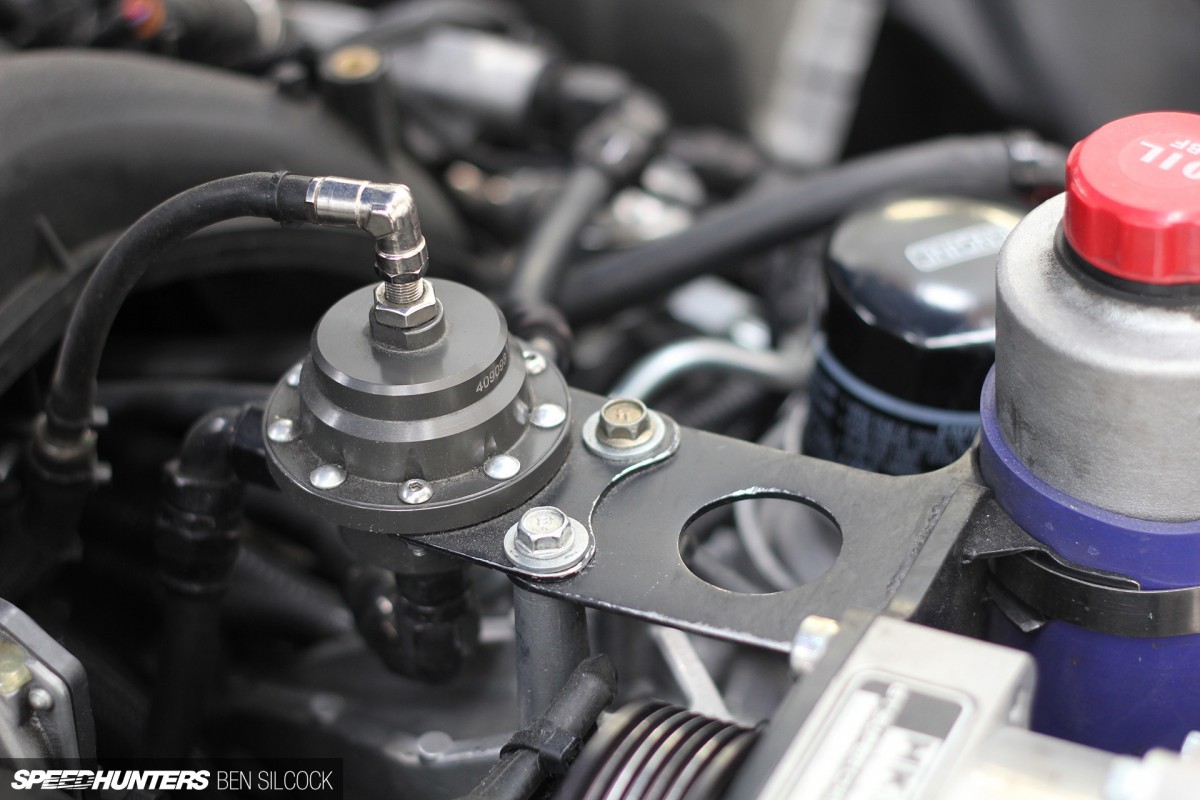
They say the devil is in the detail, and when it comes to setting up an EFI system this statement couldn’t be more true. It’s often some of the more basic elements that are overlooked, and these elements can cause wasted time, wasted money and possibly even a damaged engine. Even if you’re not planning to tune your own engine, I know a many enthusiasts will get their car up and running for the first time before taking it to the dyno shop for tuning. In this case, it pays to know how to cover some of the basic configuration jobs such as setting the base ignition timing and fuel pressure. In our last story we covered the ignition timing, so this time we’re looking at the fuel pressure.
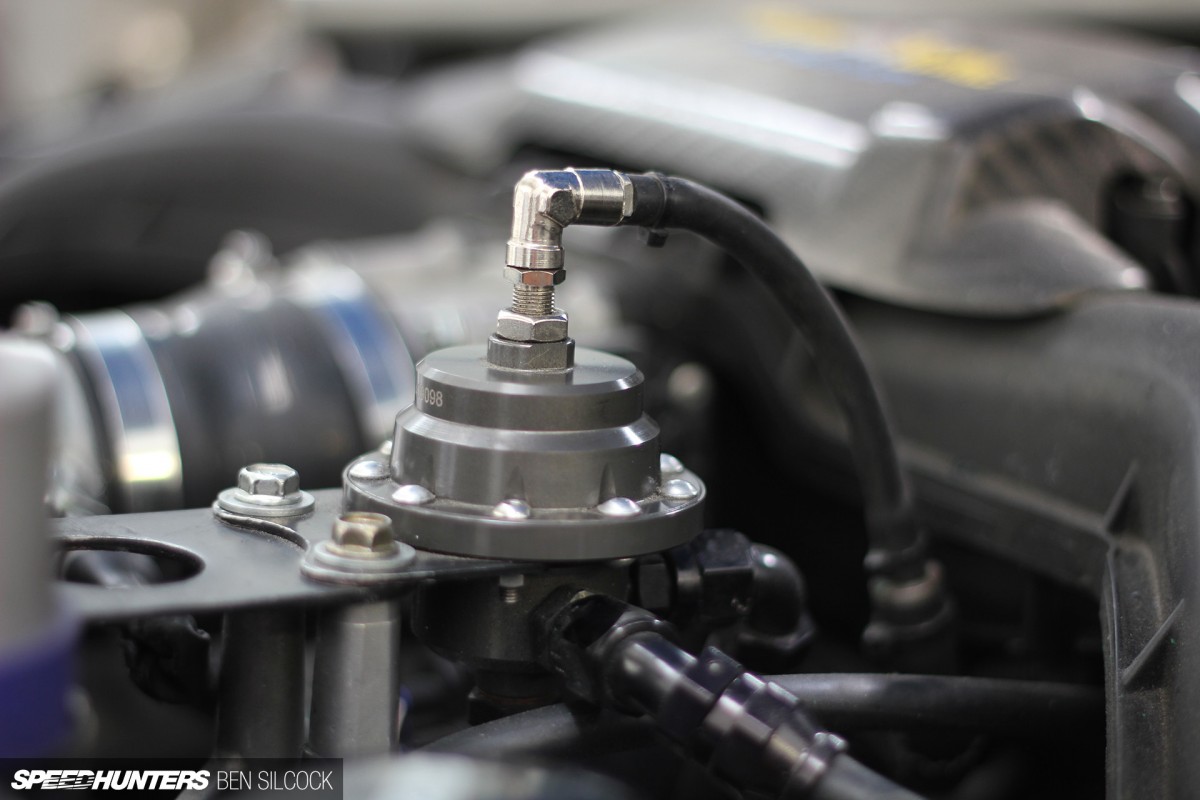
Straight forward but important
Fuel pressure isn’t particularly complex – it’s simply the pressure in the fuel system being generated by the flow from the fuel pump. The fuel pressure does have a dramatic effect on how the injectors will operate though, and in particular how much fuel they will deliver. As far as the fuel injector is concerned, it’s actually not just the fuel pressure that’s important but the difference between the fuel pressure in the fuel rail and the air pressure in the intake manifold. This is called the differential fuel pressure. The differential fuel pressure is what will determine how much fuel an injector provides for a given pulse width, as well as some of the more subtle aspects of the injector’s operation. Let’s look at why this is the case…

Let’s say for example we have a turbocharged engine and we’re driving along with the boost pressure reading 0psi. At the same time, let’s assume the fuel pressure in the fuel rail is set at 45psi. The differential pressure is simply the difference between the fuel pressure and the manifold pressure – in this case 45psi. At this point, when the injector opens there is more pressure in the fuel rail than the intake manifold so fuel will flow. What happens though if our fuel pressure stays fixed at 45psi and we wound the boost all the way up to 45psi? Well, if our fuel pressure has remained at 45psi, the differential pressure is now zero and when the injector opens, no fuel will flow since the air pressure and the fuel pressure are equal.
What you can learn from this is that the amount of fuel the injector will deliver is relative to the differential pressure across the injector. The higher the differential pressure, the more fuel the injector can flow, and as the differential pressure drops so does the fuel flow. This is important to consider if you’re adding a turbo to a late-model engine with a return-less fuel system where the fuel pressure remains constant. As you start adding boost pressure to the engine, the differential fuel pressure drops, reducing the available flow from your injectors.
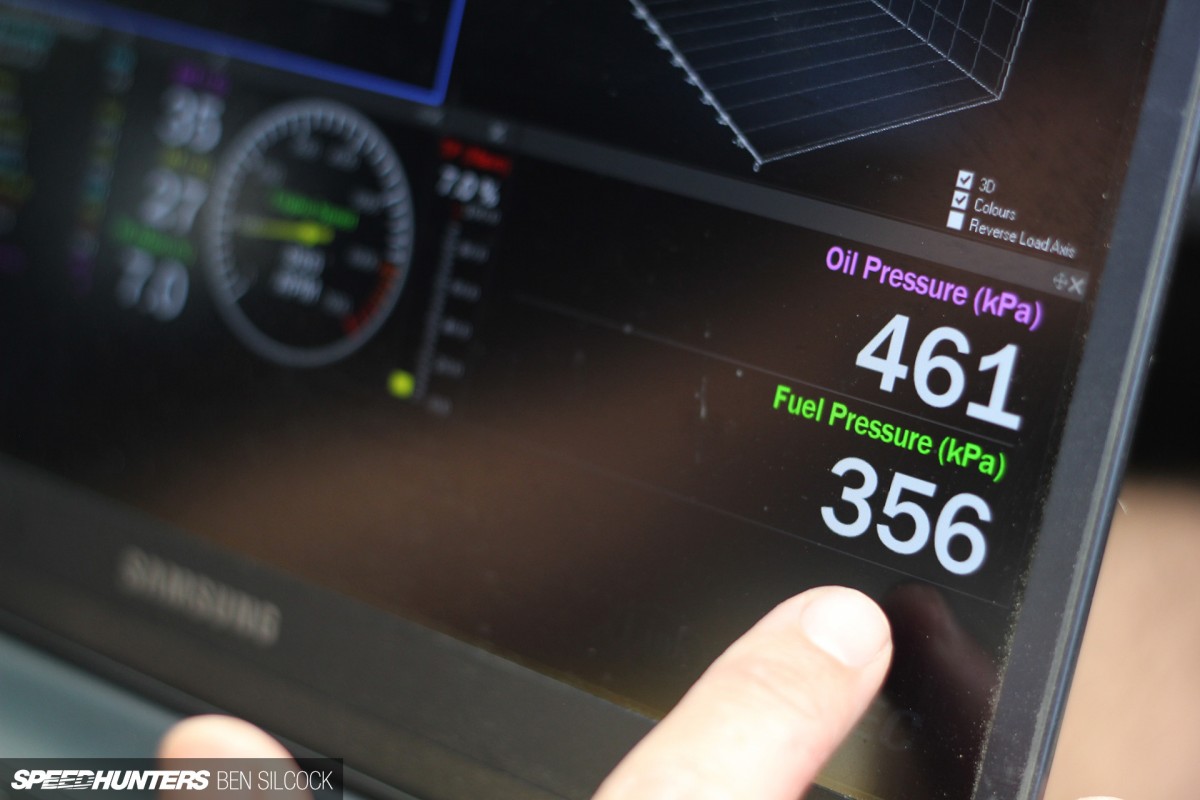
What should my fuel pressure be?
Since the fuel pressure is so critical to the injector’s performance, it makes sense that setting the fuel pressure is one of the first jobs we need to do before tuning. If your fuel system is still 100 per cent standard then there shouldn’t be much work for you to do as the fuel pressure won’t be adjustable. Even if this is the case though it’s still important to know what the fuel pressure is. This can help you diagnose problems if the fuel pump can’t keep up, and when you’re setting up an ECU prior to tuning you’re going to need to know what the fuel pressure is so you can enter the right data for your injectors. If you have an adjustable fuel pressure regulator then you have the potential to set and adjust the fuel pressure you’re running, and this leads to a few more questions like ‘what should my fuel pressure be?’
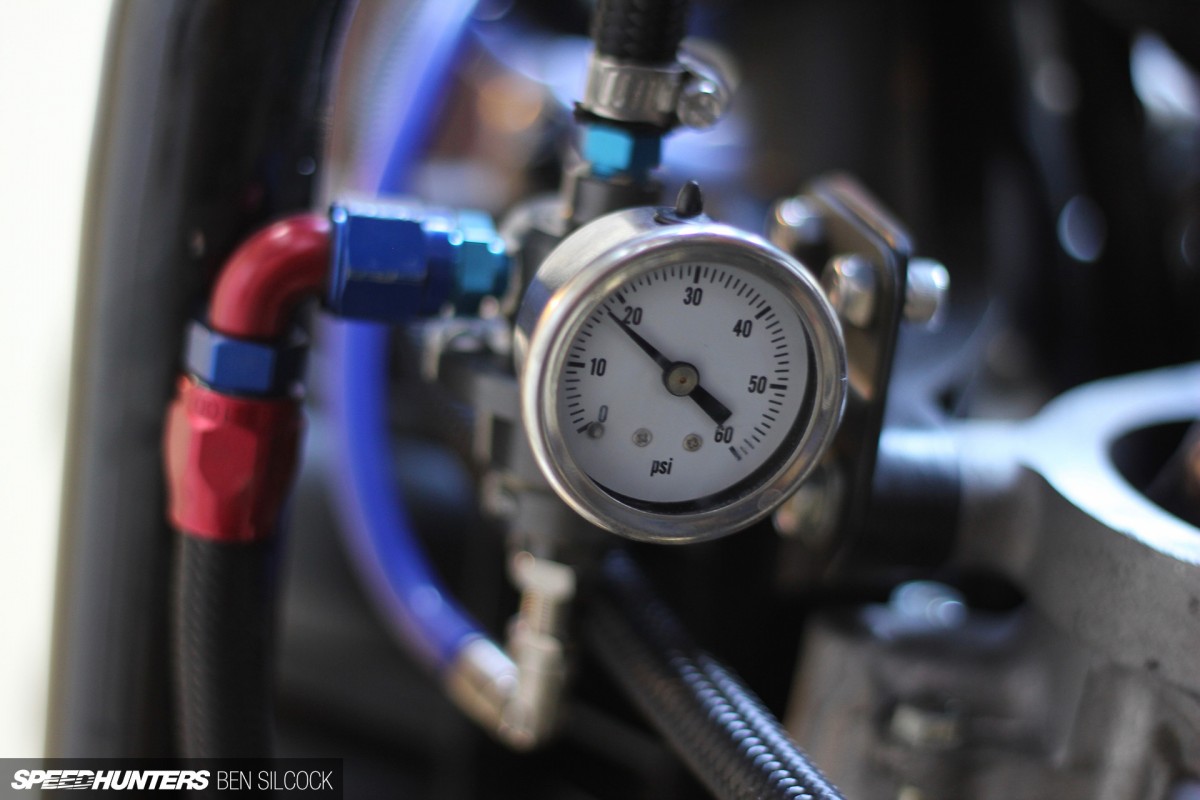
The correct fuel pressure is really going to depend on what you’re using the engine for. What’s right for an everyday road car won’t be suitable for a drag engine running 60psi boost for example. A good guideline is to look at what the OE manufacturers do and here we will usually find that in a return-less fuel system that uses a constant pressure, the fuel pressure will be 58psi or 4bar. If your fuel system uses a manifold pressure referenced fuel pressure regulator then the fuel pressure is typically 43.5psi or 3bar. This is a good starting point but these numbers aren’t set in stone.
Since the amount of fuel an injector can supply is largely dependent on the fuel pressure, this is a consideration when you’re setting the fuel pressure. Particularly if your injectors are getting near their duty cycle limit and you just need a little extra fuel, increasing the fuel pressure can give you the extra headroom you need. You do need to be careful how far you go when increasing the fuel pressure though, as the higher the fuel pressure the harder the fuel pump needs to work and often we can find that the fuel pump can’t keep up. This means you’re back in the same position of not being able to supply enough fuel to the engine. You also need to be mindful that you can’t just go increasing the fuel pressure indefinitely. As you increase the fuel pressure it becomes harder and harder for the injector to open, and at some point the injector simply stops flowing fuel.
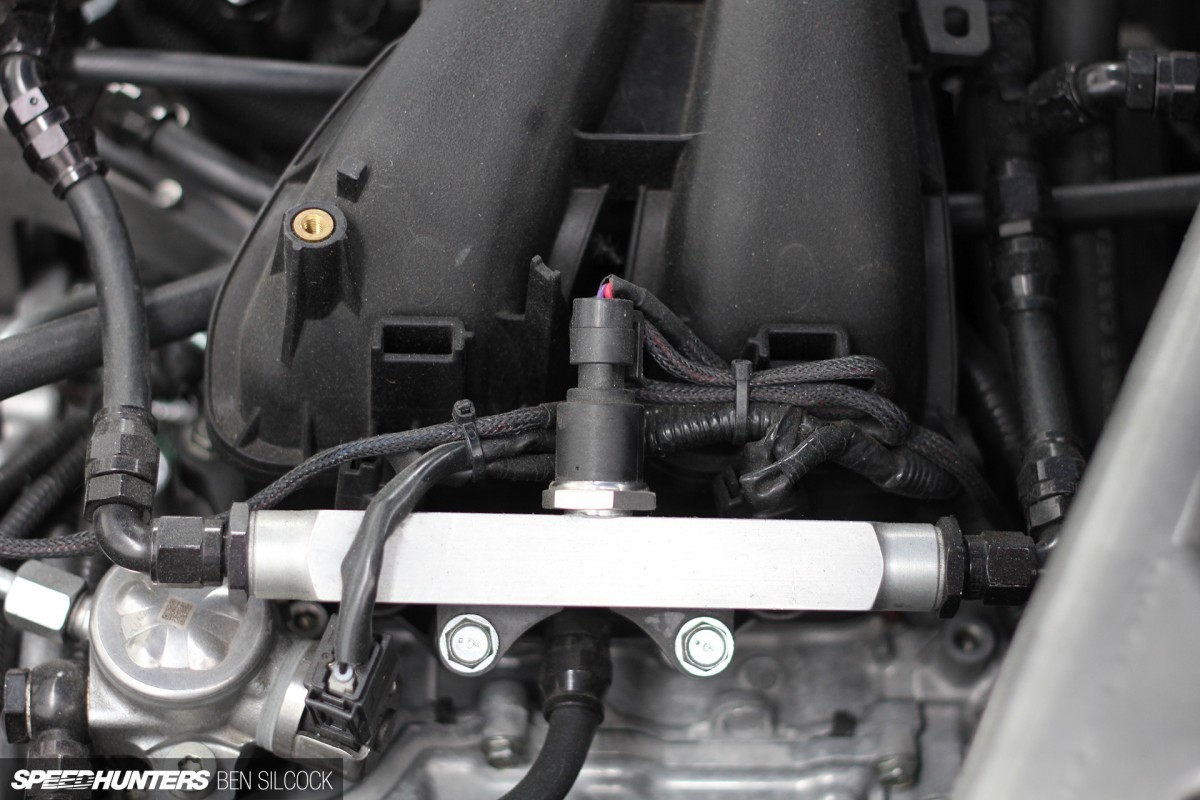
Setting fuel pressure the right way
Setting the fuel pressure is pretty simple, yet there are still a couple of places you can trip up. The first thing when setting or checking the fuel pressure is to make sure you do it with the engine running. If you turn the ignition key to the run position without starting the engine, the fuel pump will run for a few seconds to prime the fuel system, and on the face of it you’d think you could check the fuel pressure during this time. The problem with doing this is that the fuel pump is electric and the amount of fuel the pump can supply is dependent on the voltage it receives. When the engine isn’t running the alternator isn’t charging the battery and the voltage reaching the pump will be lower than what it will see when the car is running. This can give a fuel pressure reading thats a little lower than you will see with the engine idling.
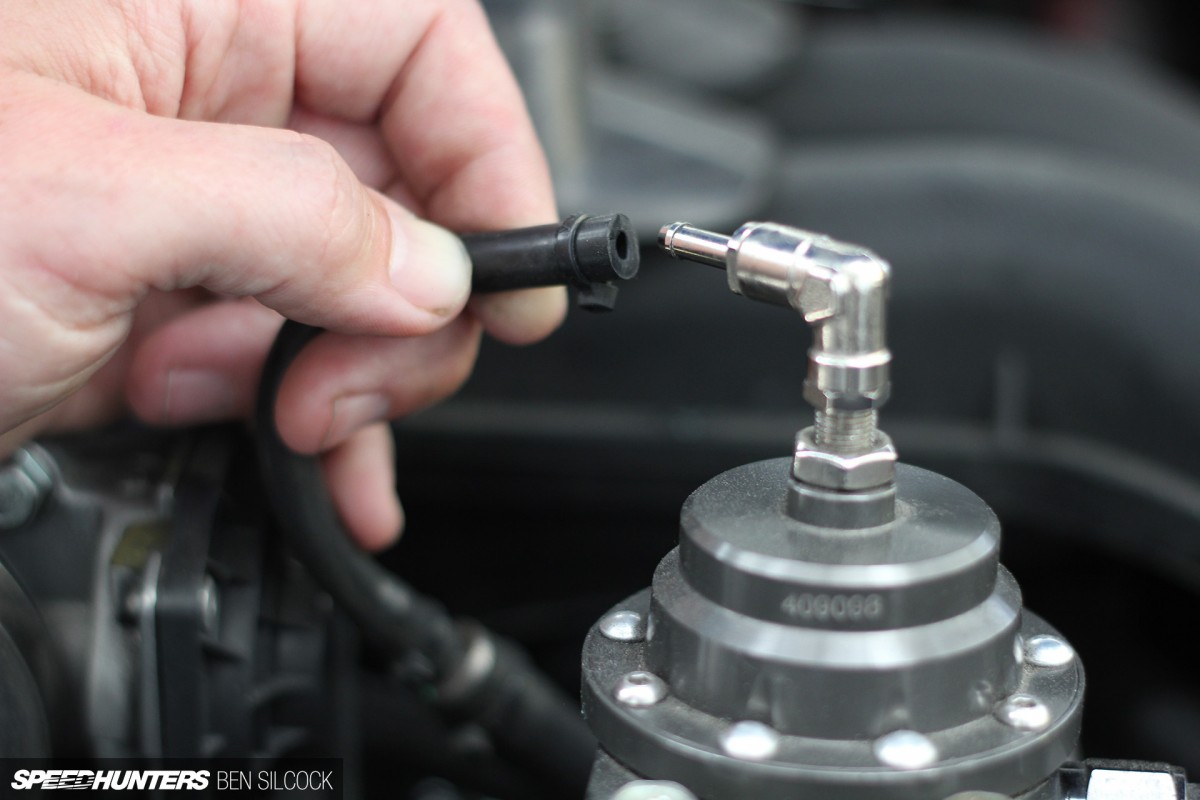
The second point if you’re using a fuel pressure regulator that has a vacuum hose running to the intake manifold is that you need to set the fuel pressure with this hose disconnected. The fuel pressure regulator’s job is to maintain a constant differential fuel pressure across the injector and this means that at idle when there is a vacuum in the intake manifold, the regulator will reduce the fuel pressure. If you adjust your fuel pressure with the vacuum hose connected, the resulting differential fuel pressure is actually going to be higher than you expect.
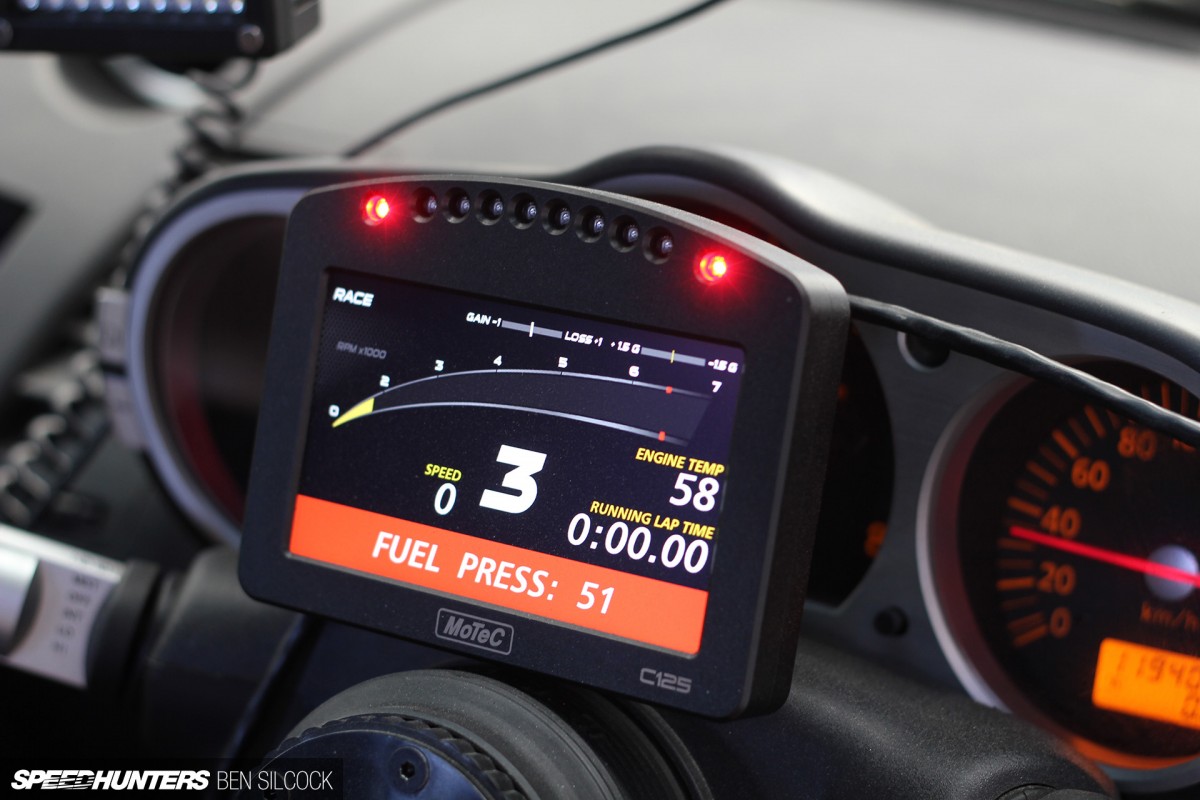
Even once you’ve got the base fuel pressure set it’s still helpful if you can monitor the pressure while the engine is being tuned. This can prove to be a big help in diagnosing problems with the fuel delivery while the car is on the dyno that can otherwise be time consuming to find. If you’ve got an electronic fuel pressure sensor permanently fitted to the engine and wired to the ECU then you can also employ some engine protection strategies if the fuel pressure drops for any reason. Check out this previous story to see how it’s done.
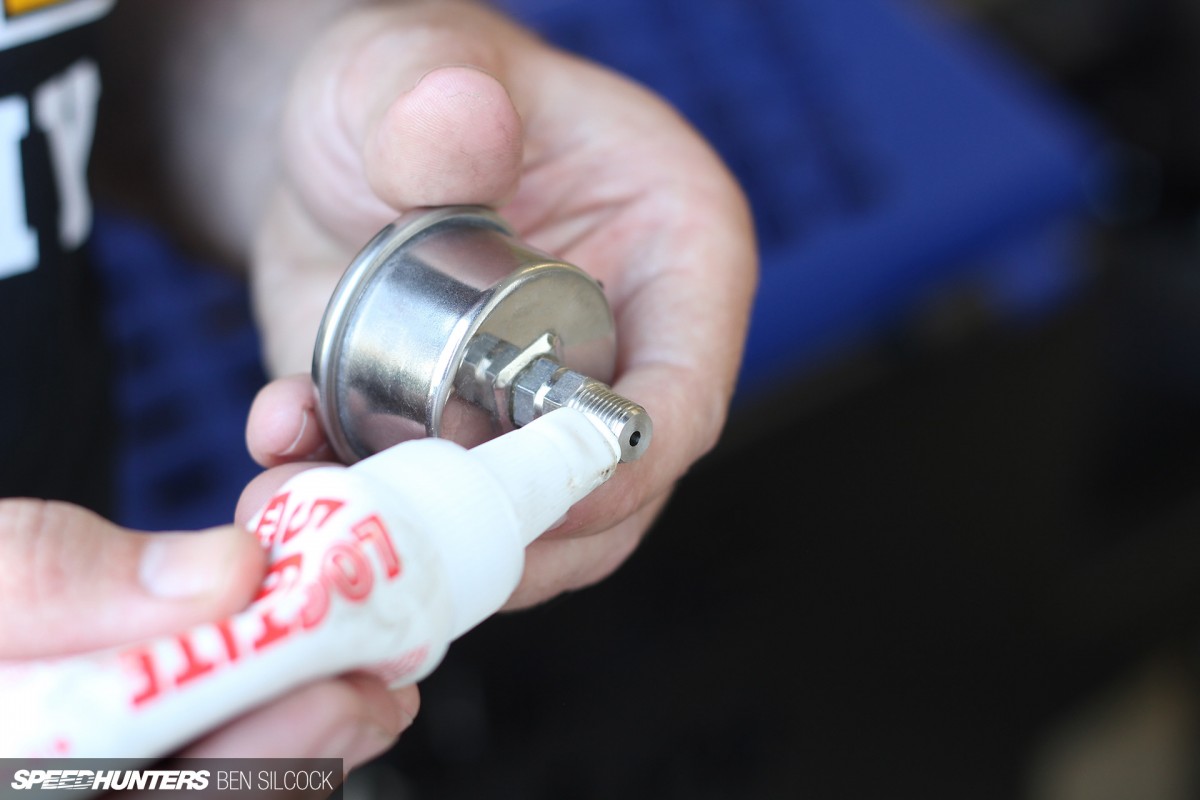
Lastly, any time you’re working on the fuel system you need to take suitable precautions. It should go without saying, but a fuel leak could be potentially devastating. Always make sure that there is no pressure left in the fuel system before removing any fittings, and always ensure that fittings are correctly tightened and leak free when reassembled. In particular, I find Loctite thread sealant is an easy way to seal the tapered plugs that are used to blank off the pressure ports on aftermarket fuel pressure regulators. It’s also easier to work with than thread tape.
If you’ve got questions or comments then please add them below and I’ll be happy to answer them. Since this series of Knowledge Boost stories have been designed to help provide you with the knowledge that you need, I’m also keen to hear what you would like us to cover in future articles. If you’re interested in learning more about EFI tuning, check out our series of 6 free lessons that will be delivered directly to your email inbox.
Andre Simon
Instagram: hpa101
Website: www.learntotune.com
Photos by Ben Silcock
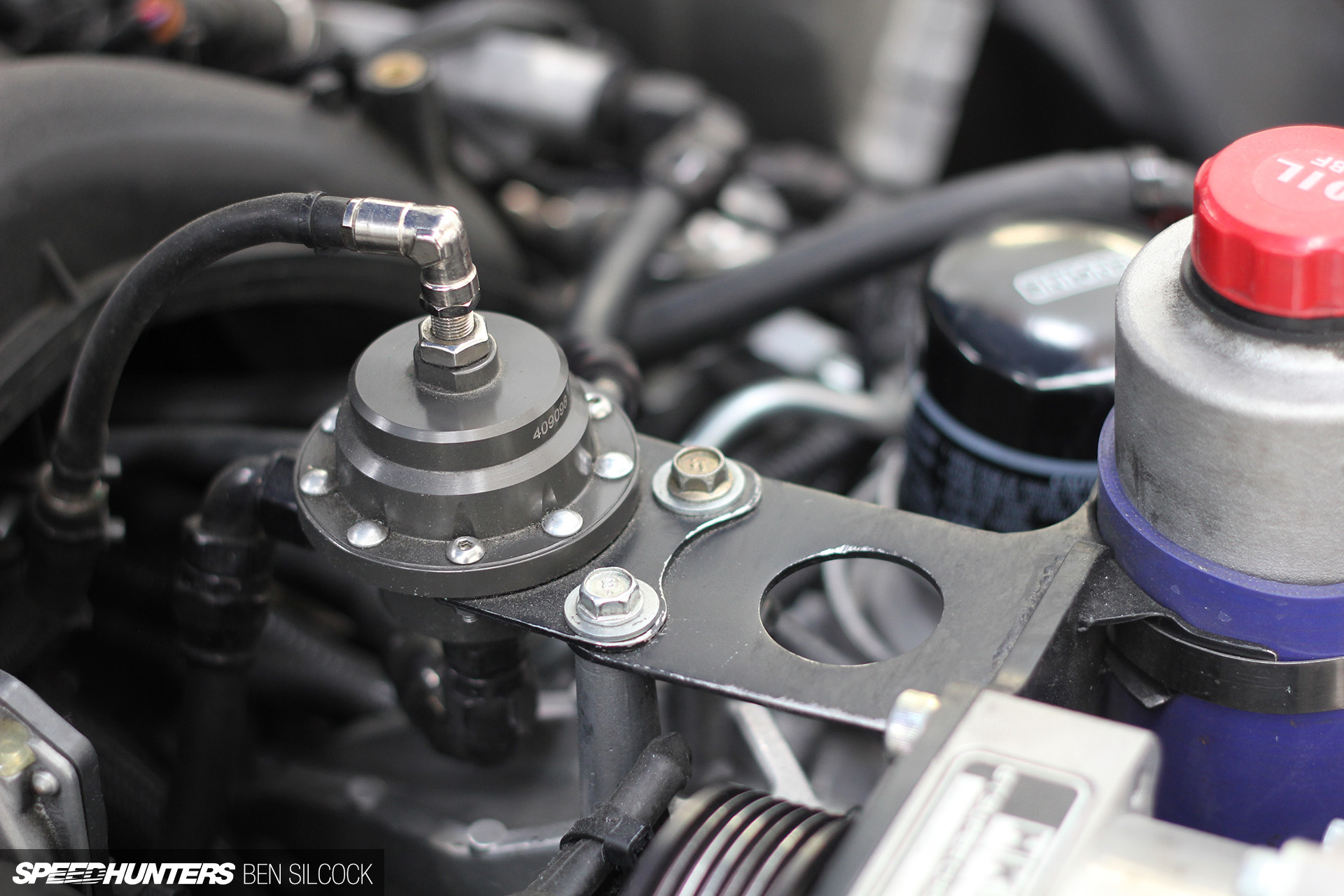

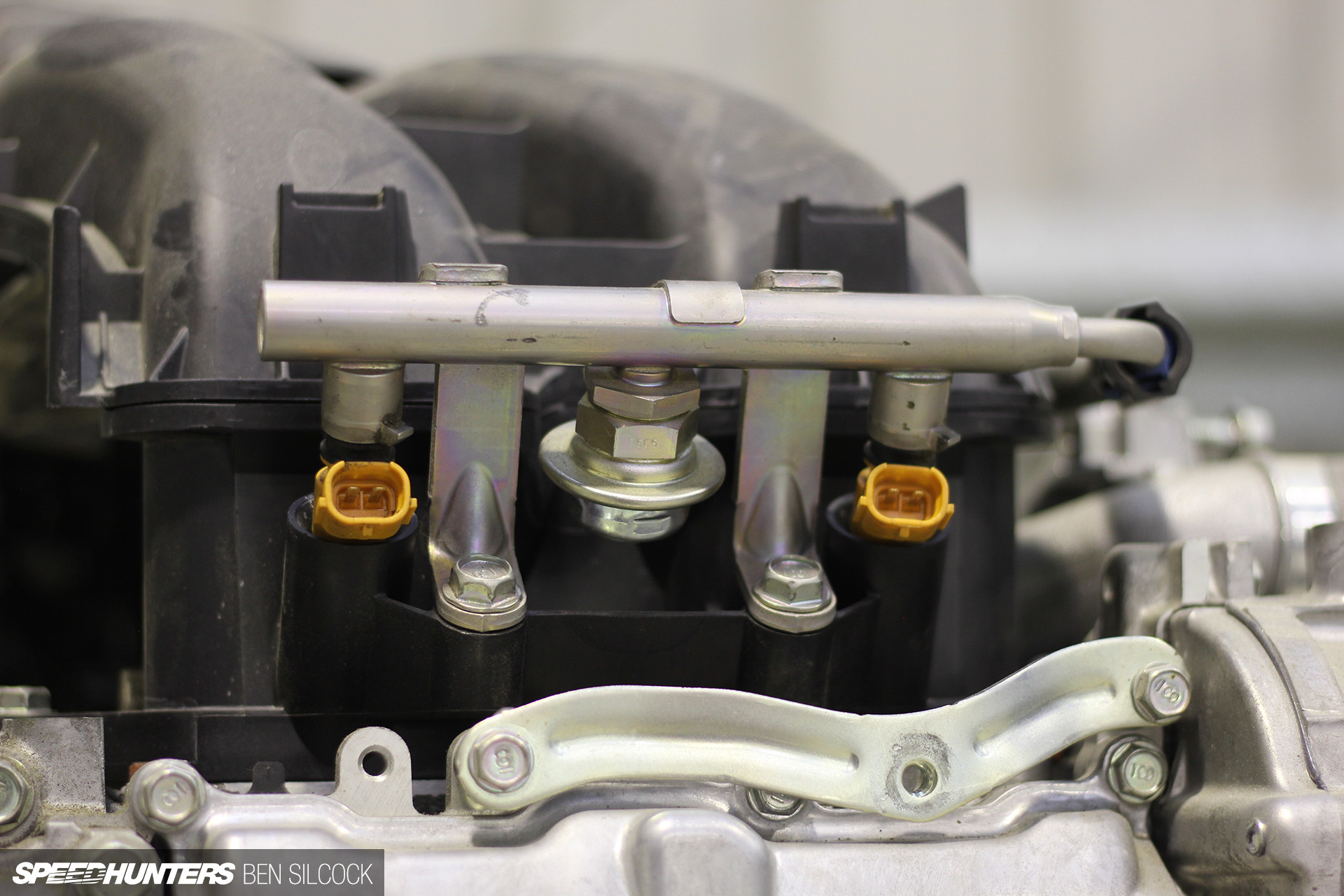



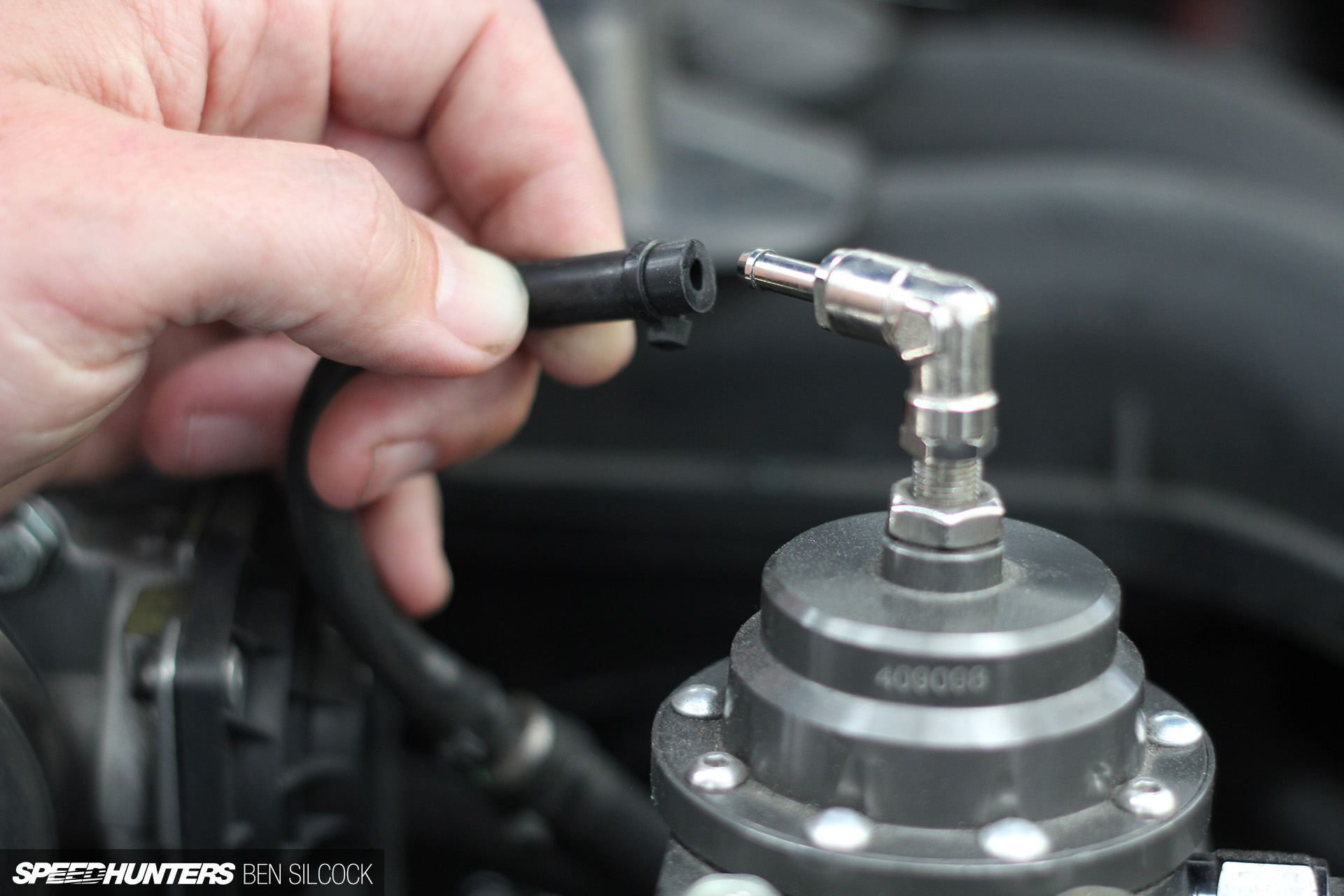










I consider myself pretty handy in terms of vehicle maintenance, I rarely ever have to see a mechanic about anything... But to actually tune a car for performance upgrades, etc, is a whole other story. I'm learning a lot and researching as I go. Thanks!
So you said to disconnect the vacuum line on the regulator when adjusting fuel pressure on an EFI vehicle... does this apply the same when setting the fuel pressure on a boosted/carb setup with the same regulator setup?
This is only the second part and I can already say, that this is one of the best (if not THE best) series of articles on speedhunters ever!
What do I do in the event of a returning fuel system? Is an adjustable FPR super essential? (turbocharging a non-turbo engine)
amazing. i thought it was always only about the lph of the fuel pump, didn't know about the pressure part. as usual, a short but very informative article!
Would this fit on my Honda?
Thanks again for sharing some of that gold, Andre. Appreciated greatly as always.
Overcomplicated.
nu gundam 93 Pressure and flow are very closely linked. In order to get the right fuel pressure you need to have a fuel pump that can provide more fuel then your engine is using. If the pump can't keep up with the engine's fuel demands then the pressure will begin to drop.
econti Great question. First of all the days of trying to fool a naturally aspirated engine to work properly with a turbo by fitting a rising rate regulator are long gone - You're simply not going to get great results. The regulator needs to be able to cope with the fuel flow that your pump provides so the regulator needs to be sized to suit your fuel system.
To cut a long story short if you're aiming for a small to moderate increase in power then you will usually be able to get by with the stock regulator. If you're dropping in a built engine and planning on 2-3 times stock power then an aftermarket regulator will likely be essential. It all comes down to whether the factory reg can support the increased flow from a larger fuel pump - If it can't the reg won't be able to control fuel pressure. You don't need an aftermarket adjustable reg just because you're turbo charging your engine.
Yossarian thanks for the kind words! I'm glad you've found the series valuable.
BettyWhite510 I'm sorry but carbs really aren't my thing. I grew up in the era of EFI and that is literally all I deal with from a tuning perspective. What I can tell you is the sort of pressures you're going to be seeing are however much lower with a carburettor than what I've talked about in this article.
@open your eyes thanks for the constructive comment.
This particular series is certainly not for everyone but fortunately if it's too complicated for you then you can entrust the work to a professional engine tuner. Many of the Speedhunters community however like to be a little more hands on with their projects and hopefully this series will help them out.
Good read!
Thank you!
Andre Simon
Thanks. I'm going from 140hp or so to a planned 300hp, so a fuel reg seems like it'll be a good idea
the car was very good
really really like to see the car that shiny new car fits like made for walking trailsthe car was very good http://utamadomino.com/app/img/peraturan.html" rel="dofollow" target="_blank">http://utamadomino.com/app/img/peraturan.html and very fast http://utamadomino.com/app/img/jadwal.html" rel="dofollow" target="_blank">http://utamadomino.com/app/img/jadwal.html mix of colors http://utamadomino.com/app/img/promo.html" rel="dofollow" target="_blank">http://utamadomino.com/app/img/promo.html from which to http://utamadomino.com/app/img/panduan.html" rel="dofollow" target="_blank">http://utamadomino.com/app/img/panduan.html make want pobud http://utamadomino.com/ see hatnya http://dokterpoker.org/app/img/peraturan.html" rel="dofollow" target="_blank">http://dokterpoker.org/app/img/peraturan.html kecepatanya http://dokterpoker.org/app/img/jadwal.html" rel="dofollow" target="_blank">http://dokterpoker.org/app/img/jadwal.html was very nice ,http://dokterpoker.org/app/img/promo.html" rel="dofollow" target="_blank">http://dokterpoker.org/app/img/promo.html suitable for a "http://dokterpoker.org/app/img/panduan.html" rel="dofollow" target="_blank">http://dokterpoker.org/app/img/panduan.html sharp bend http://dokterpoker.org or not sharp I guess motorists http://633cash.com/Games like this is http://633cash.com/Pengaturan" very skilled in the speed I hope I can membilinya someday will whether http://633cash.com/Daftar http://633cash.com/Promo there are http://633cash.com/Berita new cars http://633cash.com/Livescore are better I http://raksasapoker.com/app/img/peraturan.html" rel="dofollow" target="_blank">http://raksasapoker.com/app/img/peraturan.html 'll wait for it , with a stylish car classic http://raksasapoker.com/app/img/jadwal.html" rel="dofollow" target="_blank">http://raksasapoker.com/app/img/jadwal.html style I http://raksasapoker.com/app/img/promo.html" rel="dofollow" target="_blank">http://raksasapoker.com/app/img/promo.html also like http://raksasapoker.com/app/img/panduan.html" rel="dofollow" target="_blank">http://raksasapoker.com/app/img/panduan.html to see would be http://raksasapoker.com/ whether there is a http://yakuza4d.com/peraturan" rel="dofollow" target="_blank">http://yakuza4d.com/peraturan car that is http://yakuza4d.com as fast and forius http://yakuza4d.com/home like in the "http://yakuza4d.com/daftar movie , the car very http://yakuza4d.com/cara_main good car http://yakuza4d.com/hasil designed a way apparently hopefully http://yakuza4d.com/buku_mimpi there will be new cars more good and the price is quite pantastis then chances are I can membilinya the same as you have at this time
Hey man,
Awesome read makes alot of sense. The one question i have is what would be a good differential pressure e.g 22 psi boost to 60 psi base fuel pressure. Is ther a rule of thumb of how much psi to be over?
Hi Andre,
Thanks for the awesome article.
I had a discussion with a fellow enthusiast last week about hooking up my rising FPR or not. He says it beneficial, I`m under the impression that my EMU ECU is pretty capable of supplying enough fuel without the help of a rising FPR.
Who`s right here?
Andre Simon could you please shine your light on our dispute? It`s a matter off free beer!
bmw m50 engine uses 3.5 bar regulator vacuum controlled . some bmws (m3. m5) use 5,0 bar....why??? is there a benefit with higher pressure given both are tuned correct ?